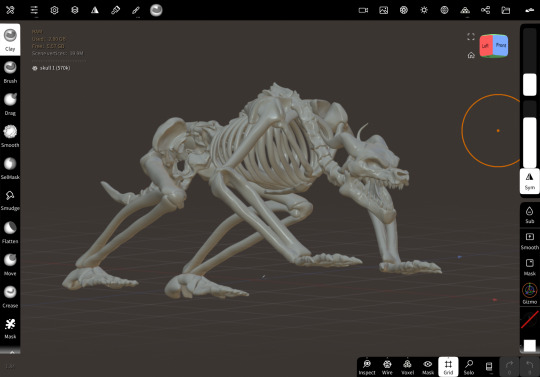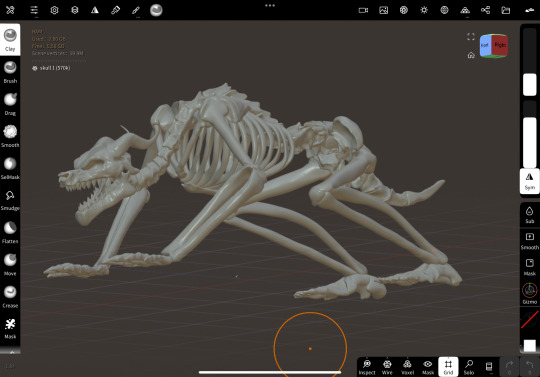#asc software
Explore tagged Tumblr posts
Text
0 notes
Text
#electronic health record software#emr software providers#emr software#asc software#asc emr systems#ambulatory surgery center emr#urgent care emr#asc billing software#asc emr
0 notes
Text

📈 Boost your practice's efficiency and keep your schedule packed! Discover expert strategies to increase return visits and optimize patient care. 🚀 Download our FREE whitepaper : https://ehnote.com/whitepapers/keep-your-schedule-full-with-return-visits
#whitepapers#ophthalmology#asc#ascsoftware#emrsoftware#ehrsoftware#emr#ehr#ophthalmology ehr emr software#ophthalmologyemr
0 notes
Text
The History of Astrocartography and Relocation Astrology
The concept of locational astrology—the idea that geography influences a person’s astrological experience—dates back thousands of years, but astrocartography, as it is known today, was formally developed by Jim Lewis in the 1970s. His groundbreaking work provided a structured, visual method for mapping planetary influences across the globe, allowing individuals to understand how different locations enhance or challenge various aspects of their lives.
Early Influences on Locational Astrology
Although Jim Lewis pioneered modern astrocartography, the foundational ideas behind astrology and location have existed for centuries:
Ancient Mesopotamia and Egypt – Early astrologers observed the relationship between the stars, planetary movements, and earthly events. While their astrology was primarily focused on omens and collective fate, certain locations were believed to hold unique energetic influences.
Classical and Hellenistic Astrology – Greek and Roman astrologers like Ptolemy (2nd century CE) wrote extensively about how the zodiac and planetary movements influenced different geographical regions. In his work Tetrabiblos, Ptolemy connected astrological signs to specific parts of the world, a precursor to modern astrocartographic thinking.
Medieval and Renaissance Astrology – Astrologers in the Middle Ages refined techniques for solar revolutions and ingress charts, which allowed for predicting events in specific locations based on planetary movements. Some Renaissance-era astrologers also experimented with adjusting natal charts to different places.
20th-Century Developments – In the early 1900s, astrologers began experimenting with relocation charts, a practice that involves casting a birth chart as if a person had been born in a different location. However, it wasn’t until Jim Lewis’s work in the 1970s that these ideas were fully developed into a structured system.
Jim Lewis and the Birth of Astrocartography
Jim Lewis (1941–1995) was a visionary astrologer who transformed an obscure branch of astrology into a structured and accessible system known as astrocartography. While the concept of locational astrology was not new—perhaps tracing back to ancient times when stellar observations were used to determine significant locations—Lewis was the first to develop a fully integrated technique, combining detailed world maps, systematic written interpretations, trademarked software, commercial services, lectures, courses, published articles, and a certified examination in the field. His efforts made astrocartography a practical tool for astrologers and the general public alike.
Before Lewis’s innovations, relocation astrology was primarily practiced through relocation charts, which involved recalculating a natal chart for a different place but lacked a visual representation of planetary influences worldwide. His work bridged the gap between traditional astrological theories and modern technology, allowing people to see how planetary energies manifest in different locations in a way that was both structured and user-friendly.
Jim Lewis’s Key Contributions to Astrocartography
Developed Astrocartography as a Mapping System – By drawing planetary lines on a world map, Lewis provided an intuitive and visually accessible way to understand how different locations emphasize specific planetary energies.
Popularised the Use of Angular Planets – He demonstrated that planets aligned with the four powerful angular points—the Ascendant (ASC), Midheaven (MC), Descendant (DSC), and Imum Coeli (IC)—become dominant forces in a person’s experience when they are physically present in those locations.
Created the First Computer-Generated Astrocartography Maps – With the rise of computing, Lewis pioneered software-based astrology tools, making it possible to generate planetary maps quickly and with precision. This technological advancement was crucial in making astrocartography widely available.
Maintained a Rigorous and Scientific Approach – Unlike many astrologers of his time, Lewis adhered strictly to established astrological traditions, focusing on visible planets in angular positions. He followed the lineage of Ptolemy and the Chaldeans, and his work aligned with the scientific research of Michel and Françoise Gauquelin, who studied planetary effects statistically. While he accepted the addition of lines for Chiron, the Lunar Nodes, and the ecliptic, he rejected lines based on planetary aspects, despite their potential commercial appeal. His commitment to clarity and precision reflected his Saturn-Uranus conjunction in Taurus in his 10th house, embodying a balance between tradition and innovation.
Jim Lewis’s legacy endures as astrocartography remains one of the most widely used tools in modern astrology, empowering people to make informed decisions about relocation, travel, career opportunities, and personal growth based on the planetary influences active in different parts of the world.

Relocation Astrology: The Evolution of Place-Based Astrology
While astrocartography focuses on mapping planetary lines, relocation astrology is a separate but complementary technique that involves recalculating a person’s birth chart for a specific location. This method has been practiced since at least the early 20th century and provides additional insights into how a person’s natal planetary placements shift when they move.
How Relocation Charts Work: Instead of mapping planetary lines, a relocation chart recalculates the birth chart as if a person had been born in their new location, altering the house placements of planets. This can shift life priorities, influence major themes, and modify how planetary energies manifest.
Key Differences from Astrocartography: While astrocartography highlights specific planetary influences in different places, a relocation chart offers a deeper, house-based interpretation of how moving to a new location changes a person’s natal blueprint.
Astrocartography and Modern Astrology
Since Jim Lewis’s pioneering work, astrocartography has become a widely used tool in astrology, with continued refinements and applications:
Computer Software Advancements – Modern astrology software allows for highly detailed and interactive astrocartography maps, making the practice more accessible than ever before.
Integration with Relocation Astrology – Many astrologers now use a combination of astrocartography and relocation charts to provide a holistic view of how a place influences an individual.
Increasing Popularity in Travel and Life Planning – More people are using astrocartography not just for relocation, but also for short-term travel, career decisions, relationship guidance, and spiritual growth.
Final Thoughts
Astrocartography has its roots in centuries of astrological thought but was transformed into a practical system by Jim Lewis in the 1970s. His contributions allowed for a visual, structured approach to understanding how different locations influence a person’s life. While relocation astrology and astrocartography are distinct methods, they work together to provide a comprehensive picture of how geography affects personal growth, career, relationships, and overall life experience.
So by combining both techniques, astrology nerds like us can make informed decisions about where to live, travel, or seek opportunities, aligning ourselves with locations that support our unique astrological blueprint.
#astrology#astrology community#astrology tumblr#astrocartography#jim lewis#relocational astrology#relocation chart#astrology history#locational astrology
7 notes
·
View notes
Text
ZeStupidArt Artist Information:








The ZeStupid Corner Art Commissions & Pricing
Introduction:
Now I know I’m not a very big or popular artist, but it warms my heart to see that you all love my content and I wanted to make it official. I have opened commissions (correction I’ve always been open to commissions), but I want to be able to get paid for what I do. I love art and I love making you guys happy. I do way more than just digital art, so here’s my criteria.
Artist Commission Pricing:
Sketches: USD 10.00
Linework: USD 15.00
Full Colored Linework: USD 25.00
Full Detailed Artwork (Backgrounds etc.): USD 40.00
Comics: USD 10.00 - 30.00
Comics are uncolored.
Case-by-Case Artwork: I can work out a price depending on what you want and what I’m capable of.
Deadlines: I try to complete artwork within 15 days. I have life events and work a full-time job like most adults, so I have to work around this too.
Refunds: No refunds after we come to an agreement on what you want, and I have already completed the artwork.
You can find some of my work on these pages:
Redbubble: https://www.redbubble.com/people/ZeStupidAUs/shop?asc=u&ref=account-nav-dropdown
Tumblr: https://zestupidart.tumblr.com/
3-D Printing Pricing:
I have recently gotten into 3-D printing, specifically resin printing and I wanted to start implementing it more for business purposes. I will list some information on my 3-D Printer and the dimensions of what I can print if you’re interested.
3-D Printer Model:
Anycubic Mono X 6KS
3-D Printer Dimensions
Machine Dimensions:
417x290x260mm/
16.4x11.4x10.2 in.(HWD)
Printing Dimensions:
200x195.84x122.4mm/
7.8x7.7x4.8 in. (HWD)
3-D Print Resolution:
6K (5,760 x 3,600 pixels) resolution
Printing Speed:
15-60mm/h
Pricing: USD 15.00 – USD 200.00
Pricing will be case-by-case on this too. People usually charge for 3-D printing speed by the hour, but I am not so certain I would keep track of that, so I am making it case by case. A lot of things go into 3-D printing. The type of resin you use, the quality of the 3-D model, and the time it takes to make your vision a reality.
For example, I start this guy at USD 15.00 because he is a very detailed 3-D model on a small scale, plus I put so much detail into him:
Custom 3-D Model Commission Pricing:
3-D Model Pricing: USD 5.00 – USD 100.00
Most of my custom 3-D Models are made in Nomad Sculpt because I find it to be a very flexible and easy software to use. I have created such great content with it and would like to share my capabilities with you. I do create custom 3-D Models and sell .STL 3-D Model files over on my Etsy.
Etsy: https://www.etsy.com/your/shops/ZeStupidShop/tools/listings?ref=seller-platform-mcnav
These are also case-by-case.
Sources:
You can reach out to me at these sources:
https://www.redbubble.com/people/ZeStupidAUs/shop?asc=u&ref=account-nav-dropdown
https://zestupidart.tumblr.com/
https://www.reddit.com/user/EndPotential3659
https://www.etsy.com/shop/ZeStupidShop
https://twitter.com/ZeStupidArt
#the owl house#luz noceda#lumity#toh#amity blight#toh spoilers#comic#my art#original#zestupidart#steven universe#su#chainsaw man#fandom#art commisions#art commissions open#Etsy#redbubble
36 notes
·
View notes
Text
yeah i doubt it
11:07 p.m. on my table still but in a happier state than before
I came on here because I just redownloaded all of my socials after deleting the apps to focus on work and real life situations (which always get a little hectic around the holidays), so I only just now saw Franco Colapinto's video where he states that he is a Sagittarius rising, and in the same breath says he is a Pisces descendant.
Which is, you know. Wrong. Pisces is the IC, Gemini is the DSC point if you have a Sagittarius ASC no matter what house system you use because the angles are angled in such a way that they are roughly around 90-180 deg away from each other.
Buuuut Astrotheme, one of my beloved astrology sites, has recently update 43's chart rating as A, as collected by Sy Scholfield. He is listed as Sagittarius rising through memory- which I'm assuming is also based on that video where he says it to a fan, as it was calculated in the second decan of Sagittarius at 16 degrees- the literal middle of the whole 30 degrees of the sign.
As much as I love Astrotheme (it's got a good database despite being free software, much like astro-seek and astro.com), I don't think it should be rated A even if it did come straight from the horse's mouth. It is completely plausible that he- by virtue of being early 2000s Gen Z as well as being a native Spanish speaker*- would remember his Rising sign better than his Descendant sign (which is generally only calculated or mentioned, really, when in terms of partners/girlfriends/boyfriends of relationship astrology, because usually guys his age mostly know about astrology because of girls his age), but he could have had someone really give him a reading and detailing his chart, and him being confused in the moment about which term was used in which.
In whichever case, according to Franco himself, he would still be a mutable Ascendant point, either a Virgo or Sagittarius rising, and his Gemini Sun would be angular, either in 7H of partners/contracts or 10H of career/public image.
While I think there is still every chance that he has Virgo rising- he doesn't look like it. He is too chill to be one- as Virgo is ruled by Mercury (the mind), and they are flighty and nervous and tend to have obsessive worries and whatnot. He just looks like a chill guy.

To be fair, he doesn't look much like a Sagittarius rising either. His Taurus placements shine through so much (6H in Sagittarius, 9H in Virgo) with those sleepy eyes, more prominent neck when compared to other racers, and a softness to his face that is usually not present when someone has Pluto in Sagittarius on the 1H of the self.
He is also young. He has yet to grow into his face. It will change, the same way that Charles Leclerc's [Libra Sun-Scorpio ASC] face went from baby Harry Potter to Monegasque fanon Tony Stark after puberty, or Max Verstappen's [Sagittarius Rising-with Mars in 1H] face looking less swollen, red-faced and puffy as he grows older**, or Esteban Ocon [night chart, Leo rising with Mars and Venus in 1H] and Lewis Hamilton [possible day chart, possible Pisces rising with Venus and Mars in 1H] having the sharpness (Mars) of their faces be smoothed out with fat (Venus, to a lesser degree than Jupiter) as Venus matures after 25 years of age so they look more oval than arrow-like.
It doesn't matter though- as long as he's not on the grid for the 2025 season, there wouldn't be a need to read the astroweather for him, as I don't watch F2.
(30) 11:50 p.m.
*I will always assume that any native Spanish speaker outside of the Philippines and Spain casually knows at least their Sun, Moon, and Rising because of famous Puerto Rican astrologer Walter Mercado and the popularity of his readings. The Philippines, while superstitious, generally practice a lot more folk Catholicism, Chinese astrology, and Feng Shui owing to their neighbors, and I don't know much about Spain's occult situation.
**Mars in a person's chart matures after 28 years. Since it is a racing planet, expect for him to face some challenges next year, since he is a day chart and Mars is the malefic out-of-sect. Ocon's night chart (but sad Solarian placement) would be good to compare with his as he is also a fellow 1H Mars who has already turned 28 in 2024.
3 notes
·
View notes
Text
Let's Fall In Love ❤️


https://www.redbubble.com/i/canvas-print/Let-s-Fall-In-Love-abstract-Products-Design-by-haya1812/8201589.T8P6B?asc=p&epik=dj0yJnU9QVZWRFR3bjVNaU85dll3T2F0TUVUVG5UQUxVY0tXZ3cmcD0wJm49V0ZHSWd6SEhxeTRiLTVjbFdtcThWUSZ0PUFBQUFBR1cxVHZ3
2 notes
·
View notes
Text
Your Immigration Journey After Filing: Key Steps Following Petition Submission
Introduction: Filing an immigration petition is only the beginning. Understanding what comes next is essential for managing expectations and preparing for each step. This guide outlines what happens after your immigration petition is submitted, from receipt notices to potential interviews.
📨 1. USCIS Receipt Notice (Form I-797)
After submission, the U.S. Citizenship and Immigration Services (USCIS) sends a Form I-797C, Notice of Action, confirming they’ve received your petition. This contains your receipt number, which you’ll use to track your case online.
🔎 2. Case Processing and Review
USCIS officers will review your case for completeness and eligibility. During this phase:
Requests for Evidence (RFEs) may be issued if additional documents are needed.
Processing times vary depending on the visa category and USCIS service center.
📆 3. Biometrics Appointment (If Applicable)
For petitions that require biometric screening (like green card applications), you’ll be scheduled for a fingerprinting appointment at a local Application Support Center (ASC).
🗂️ 4. Approval, Denial, or RFE Response
Once your petition is reviewed:
Approved petitions move to the National Visa Center (for consular processing) or stay with USCIS (if adjusting status in the U.S.).
Denied petitions may be appealed or refiled.
If you received an RFE, respond quickly and completely.
🛂 5. Interview Preparation
Many immigration categories require an interview. Applicants may be called to a U.S. consulate (if abroad) or a USCIS office (if in the U.S.). Prepare all original documents and evidence.
🌐 6. Visa Issuance or Adjustment of Status
Once approved:
If abroad, your visa is issued via consular processing.
If in the U.S., you may apply for Adjustment of Status (AOS) using Form I-485.
📋 7. Final Steps
Once your visa is issued or your AOS is approved, you’ll receive your green card or visa stamp.
Keep all documentation safe and follow any next steps (such as applying for a Social Security Number).
Conclusion: The immigration process doesn’t end at petition submission—it evolves through several critical phases. Staying informed at each stage helps reduce delays and increases your chances of success. Consider tools like Imagility’s immigration case management software to track your journey efficiently.
0 notes
Text
How NetSuite Cloud ERP Decodes Modern Billing Complexity?

Picture this: you’re billing a client for a SaaS subscription that includes a one-time setup fee plus per-usage API calls, all packaged as one invoice. This is not merely an imagination for India���s services sector. The revenue models are actually mutating. Legacy ERP systems shatter under such pressure and force finance teams to battle with juggling spreadsheets, manual entries, and guesswork. Oracle NetSuite Cloud ERP is not just another tool. It is imperative to the billing processes that need to thrive in the non-linear economy. It provides an absolute DNA rewrite.
The Pitfalls of One-Size-Fits-All Billing
IT services and logistics, healthcare, and financial services are also part of Indian businesses adopting hybrid revenue models.
Subscription + usage: Bengaluru SaaS firm bills clients for data quota as well as a monthly fee.
Milestones + retainers: Mumbai law firm bills clients for milestones achieved along with ongoing advisory retainer fees.
Outcome-based pricing: Delhi-based consultancy bills based on the ROI metric tied to the project.
These sophisticated forms of invoicing are now becoming eerily standard in many industries. However, traditional enterprise resource planning software perennially treats these models as exceptions and not the norm. Finance teams put together invoices using inefficient, cobbled-together solutions prone to errors, significant delays, and even client disputes.
3 - Billing Issues and Tackle Complexity Head On
1. Blended Billing Freedom
Using a combination of subscription, usage, and project-based constituents to create one single invoice is much more than difficult. It is a compliance nightmare and fraught with danger. Oracle NetSuite ERP helps straddle these hybrids.
E-classroom platforms offer courses, admit term qualifications (subscriptions), one-off certification, and allow retake attempts (usage). Leading to a demand for accuracy.
Subscription Cycles: Enrollments with prorated captures for mid-cycle upgrades self-adjust.
Usage tracking: Billed API calls, storage, or transaction volumes are captured directly within the invoices.
Milestone triggers: Automatic billing of clients when predetermined phases of projects hit expected KPIs is available.
Gone are the days of calculation-related drudgery or inaccurate revenues and expenditures being reported.
2. Compliance Innocently Integrated During Transactions
The mixed billing procedure under India’s GST discipline is a complex formula.
Relevant tax rates can be pre-recorded as being auto-applied based on definition per certain specific service or product.
GST-approved invoices can be created along with listed accounts and itemized summary parts of the invoices.
A maximum of three incredibly rigid CA audit satisfactions can be alongside available surveillance history.
For every invoice that is created, compliance can feel like having a billing professional integrated.
3. Real-Time Revenue Recognition
ASC 606 and Ind-AS 115 require specific revenue allocation to be accurately split across deliverables. Kochi logistics firms giving bundled services such as warehousing and analytics must split revenue accurately. Oracle NetSuite Cloud ERP does this dynamically:
Monetize as a milestone is hit or usage is accrued.
Unearned revenue is deferred automatically.
Compliance-controlled reports can be generated for audit or investment queries.
From the CFO’s perspective, this is not convenient. It’s a life-and-death scenario.
Why NetSuite Trumps Legacy Billing Tools?
Broad ERP Solutions makes it a requirement that companies contort to their limits. Oracle NetSuite Cloud ERP contorts to yours:
Single Pricing Catalogs: Centralize management of subscription plans, fees, and usage tiers into one catalog.
Support for Global Currencies: Bill in the following INR, USD, and EUR while reconciling with your base currency.
Configuring India First: GST, TDS, and e-invoicing are baked into workflows.
NetSuite has made the world incredibly easy, while their competitors continue tripping over their self-built walls.
Billing Complexity Isn’t a Problem—It’s an Opportunity
For Indian service providers, having the agility to bill is not merely a business advantage; it is strategic to their very existence. NetSuite Cloud ERP has always been a vital tool for businesses aiming to stay competitive in today’s fast-changing market. SoftCore Solutions proudly holds the distinction of being one of the best Oracle NetSuite Cloud ERP partners in India. Oracle NetSuite Cloud ERP has redefined billing by automating billing tasks into a strategic tool that increases client loyalty and cash flow. Businesses of the future will rely on aggressive billing strategies rather than timid ones.
Frequently Asked Questions
1. How does NetSuite manage GST on complex billing models?
NetSuite applies appropriate GST tax for each line item, charged based on their type, ensuring compliance with regulations.
2. Is NetSuite useful for startups with changing pricing?
NetSuite can support these changes. Start with a basic system and implement more ERP modules as the business grows.
3. Does NetSuite support integration with third-party usage trackers?
Yes. APIs allow connection to IoT devices, APIs, or custom meters to provide real-time data.
4. Where do Indian businesses go to get support for NetSuite billing?
Work with NetSuite partners based in India to customize implementation.
5. Am I allowed to combine subscription services with selling products?
Yes. Oracle NetSuite Cloud ERP automates billing and reporting, consolidating recurring and one-time charges to streamline customer invoicing.
#netsuite implementation#Oracle NetSuite Cloud ERP#Oracle NetSuite Cloud ERP Partners in India#NetSuite Cloud ERP#NetSuitePartners in India
0 notes
Text

ASCs are leveraging digital tools like patient portals and mobile apps to enhance communication and personalize the surgical experience. Explore 1st Providers Choice's cutting-edge ASC EMR features, designed to meet your center's unique needs, and elevate your surgical outcomes. Enhance patient care and streamline your processes today at https://1stproviderschoice.com/
0 notes
Text

Explore how specialty-specific modules in EMR/EHR systems enhance patient care and streamline workflows. Tailored to the unique needs of various medical specialties, these modules provide targeted tools and functionalities, improving efficiency, accuracy, and patient outcomes. Learn how specialty-specific modules from EMR-EHRS.com can transform your practice by delivering customized solutions that align perfectly with your specialty's requirements.
0 notes
Text
0 notes
Text
Lease Management Market Size, Share, Analysis, Forecast, Growth 2032: Post-Pandemic Recovery and Market Resilience
The Lease Management Market Size was valued at USD 5.01 Billion in 2023. It is expected to grow to USD 8.44 Billion by 2032 and grow at a CAGR of 6.00% over the forecast period of 2024-2032.
Lease Management Market is experiencing a significant transformation driven by digital adoption and the increasing complexity of real estate portfolios. Enterprises are increasingly seeking comprehensive solutions that streamline operations, ensure compliance, and offer real-time data insights. The integration of lease administration with accounting standards such as IFRS 16 and ASC 842 is pushing organizations to adopt more robust and agile lease management software. This shift is not only reducing operational inefficiencies but also unlocking strategic value from real estate assets.
Lease Management Market is also benefiting from growing investor interest and evolving regulatory landscapes. Businesses across various sectors—ranging from retail and healthcare to manufacturing and IT—are now prioritizing smarter lease decisions, backed by predictive analytics and cloud-based platforms. The need for transparency, audit readiness, and efficient asset tracking has made lease lifecycle automation a business-critical function. This demand is further amplified by hybrid work models and the proliferation of leased spaces in dynamic, multi-site operations.
Get Sample Copy of This Report: https://www.snsinsider.com/sample-request/3592
Market Keyplayers:
Accruent (Lucernex)
CoStar Realty Information, Inc. (CoStar Suite)
IBM Corporation (IBM TRIRIGA)
Lease Accelerator (Lease Accelerator Software)
MRI Software, LLC (MRI Lease Management)
Odessa (Odessa Lease Management)
Oracle (Oracle Lease and Finance Management)
SAP (SAP Real Estate Management)
RealPage, Inc. (RealPage Lease Management)
Yardi Systems Inc. (Yardi Voyager)
Nakisa Inc. (Nakisa Lease Administration)
Cin7 (Cin7 Inventory Management)
LeaseQuery (LeaseQuery Lease Accounting Software)
eLease (eLease Lease Management Software)
Asset Panda (Asset Panda Lease Management)
WiredScore (WiredScore Certification Platform)
Mapletree (Mapletree Lease Management System)
ProLease (ProLease Software)
NetSuit (NetSuite ERP)
FAS Solutions (FAS Lease Accounting Software)
Market Analysis The lease management industry is positioned at the crossroads of technological innovation and regulatory compliance. Organizations today are looking beyond traditional lease tracking; they require holistic platforms that offer contract digitization, financial forecasting, real-time reporting, and integrated payment scheduling. As environmental, social, and governance (ESG) priorities gain traction, lease systems are also expected to support sustainability and carbon footprint tracking of real estate assets.
Market Trends
Increasing adoption of AI and automation for lease abstraction and analysis
Rise in demand for integrated solutions supporting lease accounting compliance
Growth of cloud-based and mobile-first lease management platforms
Greater emphasis on data security and audit preparedness
Surge in usage of analytics for portfolio optimization and risk assessment
Expansion of lease management tools to serve SMEs and mid-market enterprises
Tailored solutions for sector-specific needs, especially in retail and logistics
Market Scope The market encompasses a broad range of services and software solutions that manage real estate and equipment lease portfolios throughout their lifecycle—from lease origination and negotiation to renewals and terminations. Key stakeholders include lessors, lessees, facility managers, financial officers, and IT departments. This market serves multiple verticals including commercial real estate, public infrastructure, corporate offices, healthcare, education, and manufacturing, making it a vital operational pillar across industries.
Market Forecast The lease management market is poised for rapid evolution. As digital transformation becomes integral to enterprise operations, the reliance on AI-powered, user-friendly, and globally compliant platforms will increase. Service providers are likely to expand their offerings with customizable dashboards, machine learning algorithms, and third-party integrations. Market expansion will be influenced by shifting workplace norms, cross-border leasing demands, and the necessity to optimize financial reporting and asset utilization. Stakeholders who prioritize agility, scalability, and compliance will lead the next phase of market growth.
Access Complete Report: https://www.snsinsider.com/reports/lease-management-market-3592
Conclusion The lease management market is not merely adapting—it’s redefining how organizations interact with their physical and financial assets. As businesses strive for operational resilience and fiscal accountability, modern lease management solutions will become indispensable. The future belongs to platforms that combine intelligence, flexibility, and compliance in a seamless user experience. For companies looking to stay ahead of the curve, investing in transformative lease technology is no longer optional—it’s strategic.
About Us:
SNS Insider is one of the leading market research and consulting agencies that dominates the market research industry globally. Our company's aim is to give clients the knowledge they require in order to function in changing circumstances. In order to give you current, accurate market data, consumer insights, and opinions so that you can make decisions with confidence, we employ a variety of techniques, including surveys, video talks, and focus groups around the world.
Contact Us:
Jagney Dave - Vice President of Client Engagement
Phone: +1-315 636 4242 (US) | +44- 20 3290 5010 (UK)
0 notes
Text
Navigating Revenue Recognition Complexities in Professional Services Firms

Revenue recognition is one of the most critical—and complicated—financial processes for professional services firms. Whether you’re running a consulting business, IT services company, or engineering firm, recognising revenue at the right time is essential for maintaining financial accuracy, ensuring compliance, and supporting business growth. But unlike product-based companies that follow a relatively straightforward sales model, professional services firms face unique complexities in revenue recognition.
Understanding the Core Challenge
Revenue recognition isn’t just about recording income—it’s about reflecting the economic reality of service delivery. The question is not “when did we send the invoice?” but rather “when have we earned the right to record revenue?” This distinction becomes tricky when service engagements span weeks or months, involve multiple milestones, or are billed based on time, deliverables, or outcomes.
As a result, navigating revenue recognition complexities in professional services firms requires a deep understanding of both accounting standards and project operations.
Common Revenue Recognition Scenarios in Services Firms
Time-and-Materials (T&M): Revenue is recognised as services are delivered. However, accurately tracking time spent and aligning it with billable rates is essential.
Fixed-Price Contracts: These can stretch over several months, requiring revenue to be recognised over time, often using percentage-of-completion methods. Delays or scope changes complicate the process.
Milestone-Based Billing: Revenue is recognised when specific deliverables or milestones are completed. But what happens when milestones are delayed or disputed?
Retainers and Subscriptions: Often paid upfront, these require revenue to be deferred and recognised evenly over the agreed service period.
Key Challenges That Make Revenue Recognition Complex
Lack of Integration between project teams and finance, leading to poor visibility of actual work progress.
Manual Tracking, often through spreadsheets, increasing risk of error and inefficiency.
Changing Scope or Timelines, which impacts billing cycles and disrupts planned revenue schedules.
Regulatory Pressures, such as adherence to IFRS 15 or ASC 606, which require clear mapping of performance obligations and matching them to revenue events.
Solutions for Simplifying Revenue Recognition
1. Establish Clear Revenue Recognition Policies
Set clear, organisation-wide policies based on contract types and align them with global accounting standards. Educate project and finance teams to ensure consistent application.
2. Leverage PSA Software
Adopting a Professional Services Automation (PSA) platform enables firms to automate revenue tracking based on real-time project progress, milestones, and actual time logs. This reduces reliance on manual inputs and ensures compliance.
3. Improve Collaboration Between Teams
Create a unified process where project managers, delivery leads, and finance teams work from the same data source. This ensures revenue is only recognised when work is completed as per the contract.
4. Enable Forecasting and Visibility
With better tools and data, firms can forecast revenue more accurately, manage cash flow efficiently, and quickly adapt to project changes.
Final Thoughts
Revenue recognition doesn’t need to be a bottleneck. With the right systems, structure, and collaboration in place, professional services firms can simplify this complex process, gain financial clarity, and scale confidently. By navigating revenue recognition complexities with a strategic and tech-enabled approach, firms turn compliance into a competitive advantage—delivering accurate, timely, and trusted financial reports.
0 notes
Text
The ZeStupid Corner Commissions & Pricing:
Introduction:
Now I know I’m not a very big or popular artist, but it warms my heart to see that you all love my content and I wanted to make it official. I have opened commissions (correction I’ve always been open to commissions), but I want to be able to get paid for what I do. I love art and I love making you guys happy. I do way more than just digital art, so here’s my criteria.
Artist Commission Pricing:
Sketches: USD 10.00
Linework: USD 15.00
Full Colored Linework: USD 25.00
Full Detailed Artwork (Backgrounds etc.): USD 40.00
Comics: USD 10.00 - USD 30.00
Case-by-Case Artwork: I can work out a price depending on what you want and what I’m capable of.
Deadlines: I try to complete artwork within 15 days. I have life events and work a full-time job like most adults, so I have to work around this too.
Refunds: No refunds after we come to an agreement on what you want, and I have already completed the artwork.
You can find some of my work on these pages:
Redbubble: https://www.redbubble.com/people/ZeStupidAUs/shop?asc=u&ref=account-nav-dropdown
Tumblr: https://zestupidart.tumblr.com/
3-D Printing Pricing:
I have recently gotten into 3-D printing, specifically resin printing and I wanted to start implementing it more for business purposes. I will list some information on my 3-D Printer and the dimensions of what I can print if you’re interested.
3-D Printer Model:
Anycubic Mono X 6KS
3-D Printer Dimensions
Machine Dimensions:
417x290x260mm/
16.4x11.4x10.2 in.(HWD)
Printing Dimensions:
200x195.84x122.4mm/
7.8x7.7x4.8 in. (HWD)
3-D Print Resolution:
6K (5,760 x 3,600 pixels) resolution
Printing Speed:
15-60mm/h
Pricing: USD 15.00 – USD 200.00
Pricing will be case-by-case on this too. People usually charge for 3-D printing speed by the hour, but I am not so certain I would keep track of that, so I am making it case by case. A lot of things go into 3-D printing. The type of resin you use, the quality of the 3-D model, and the time it takes to make your vision a reality.
For example, I start this guy at USD 15.00 because he is a very detailed 3-D model on a small scale, plus I put so much detail into him:
Custom 3-D Model Commission Pricing:
3-D Model Pricing: USD 5.00 – USD 100.00
Most of my custom 3-D Models are made in Nomad Sculpt because I find it to be a very flexible and easy software to use. I have created such great content with it and would like to share my capabilities with you. I do create custom 3-D Models and sell .STL 3-D Model files over on my Etsy.
Etsy: https://www.etsy.com/your/shops/ZeStupidShop/tools/listings?ref=seller-platform-mcnav
These are also case-by-case.
Sources:
You can reach out to me at these sources:
https://www.redbubble.com/people/ZeStupidAUs/shop?asc=u&ref=account-nav-dropdown
https://zestupidart.tumblr.com/
https://www.reddit.com/user/EndPotential3659
https://www.etsy.com/your/shops/ZeStupidShop/tools/listings?ref=seller-platform-mcnav
https://twitter.com/KMoran997



#zestupidart#original#my art#art commissions open#art commisions#art commission info#art commission prices#art commission sheet
3 notes
·
View notes
Text
Revolutionizing Precision with 3D Laser Scanners
Introduction
Precision measurement is crucial in industries like manufacturing, aerospace, and automotive. Advanced tools like 3D Laser Scanners have become essential for improving accuracy, enhancing efficiency, and ensuring quality control.

What Are 3D Laser Scanners? 3D Laser Scanners are advanced metrology tools designed to capture detailed, three-dimensional data from objects or surfaces. These scanners use laser beams to map complex geometries, producing precise digital representations for inspection, reverse engineering, and quality assurance.
Key Benefits of 3D Laser Scanners in Industrial Applications
Unmatched Accuracy:
3D Laser Scanners provide precise measurements with minimal error, ensuring quality control in production lines.
Speed and Efficiency:
These scanners can rapidly capture complex surfaces, reducing downtime and improving workflow.
Versatility Across Industries:
3D Laser Scanners are ideal for aerospace, automotive, medical devices, and even art restoration.
Non-Contact Measurement:
By using laser technology, these scanners eliminate the risk of damaging delicate parts during the inspection process.
Enhanced Documentation:
Digital models created by 3D Laser Scanners provide detailed records for future reference.
**Top Features of Reliable 3D Laser Scanners When choosing 3D Laser Scanners, it's important to consider:
High-Resolution Imaging: Captures intricate details with precision.
Portability: Compact designs enhance mobility for on-site inspections.
User-Friendly Interfaces: Simplified software improves accessibility for operators.
Fast Data Processing: Reduces waiting time by rapidly converting scan data into usable formats.
Why Choose ASC International for 3D Laser Scanners? ASC International specializes in providing high-performance 3D Laser Scanners designed for precision and efficiency. Their scanners are engineered to meet the demanding requirements of industries such as electronics, medical devices, and manufacturing. By offering advanced scanning solutions, ASC International ensures businesses achieve optimal accuracy and streamlined operations.
Applications of 3D Laser Scanners in Various Industries
Manufacturing:
Used for inspecting complex components to ensure they meet design specifications.
Aerospace:
Facilitates precision testing for engine parts and structural elements.
Automotive:
Enhances quality control in vehicle part production.
Healthcare:
Assists in creating detailed models for prosthetics and implants.
Art and Architecture:
Helps preserve historical artifacts and create accurate building models.
How 3D Laser Scanners Improve Efficiency
Real-Time Feedback: Instant data capture allows immediate analysis for faster decision-making.
Reduced Human Error: Automated scanning minimizes inaccuracies caused by manual inspection.
Enhanced Workflow: Quick scanning speeds improve production timelines and quality assurance.
Choosing the Right 3D Laser Scanners for Your Needs When selecting 3D Laser Scanners, consider:
Scanning Range: Choose a scanner with the appropriate range for your workspace.
Accuracy and Resolution: Higher resolution is crucial for intricate designs.
Software Compatibility: Ensure the scanner integrates seamlessly with your existing design software.
Conclusion Investing in 3D Laser Scanners is essential for businesses seeking precise measurements, improved efficiency, and enhanced quality control. With advanced solutions from ASC International, industries can confidently adopt cutting-edge technology for superior results. Visit ASC International to explore the latest innovations in 3D Laser Scanners and transform your industrial processes today
0 notes